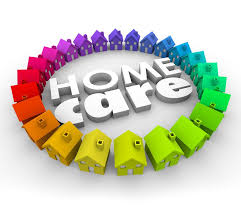Goal: meaningful connections, sharing caregiving responsibilities, and developing community-based solutions.
You are here
Tech-enabled home care 2012-2021 -- are we there yet?
 The home care market is (still) a booming business opportunity. Home care of various types now augments and even enhances services that not long ago may have been provided by senior housing. Pre-pandemic forecasts indicate 34% annual job growth from 2019-2029, much faster than average, and demand has no doubt been exacerbated during 2020. Home care workers are also among the lowest paying and least trained occupations. Frail patients, according to insiders, are increasingly being discharged from hospitals directly to home, bypassing rehab nursing homes. At home, these individuals likely still require assistance with activities of dressing, bathing, medication management, food preparation and household tasks. And many already at home and in assisted living need the same care.
The home care market is (still) a booming business opportunity. Home care of various types now augments and even enhances services that not long ago may have been provided by senior housing. Pre-pandemic forecasts indicate 34% annual job growth from 2019-2029, much faster than average, and demand has no doubt been exacerbated during 2020. Home care workers are also among the lowest paying and least trained occupations. Frail patients, according to insiders, are increasingly being discharged from hospitals directly to home, bypassing rehab nursing homes. At home, these individuals likely still require assistance with activities of dressing, bathing, medication management, food preparation and household tasks. And many already at home and in assisted living need the same care.
Aging population and healthcare changes make home care market expansion inevitable. Even without the pandemic, home care demand would be rising. With the 85+ now representing the fastest growing age segment, and with aging at home preferred to senior housing, the home health and non-medical home care businesses are poised to further grow: home health aide services as part of skilled home health care are further fueled by hospital penalties for excessive re-admissions of patients with heart failure, heart attack or pneumonia. Furthermore, shrinking reimbursement rates for rehabilitation/nursing home stays and reduction in Medicaid coverage boost risks to those frail elderly who are most likely to be readmitted to the hospital post-discharge and who may be least equipped to take care of themselves.
But pay is poor and home care quality and oversight are variable. Unlike nursing homes, no standards-setting organizations specify minimum care requirements in the home. And at the lowest skill level, non-medical home care jobs pay an average $12/hour according to the Bureau of Labor Statistics. Most firms hire part-time workers and overall job turnover has lessened but is still high – 64% in 2020 for a hands-on and difficult job. In addition to low pay and benefits, non-medical and home health jobs can be lonely, with no onsite supervision or peer relationships, nor an obvious career path to better pay or growth. Commutes can be long, care may be constrained to a few hours per day, just three times per week, whether by insurance reimbursement rates or cost to families. Private pay full-time care is not viable. At the proposed minimum wage of $15/hour, full-time care would be at least double the $51K average annual cost of residential assisted living.
The vision for tech-enabled home care persists and may still be unrealized. In July of 2012 the report, The Future of Home Care Technology, a survey report sponsored by Philips, Microsoft, and LivHOME, was published. Regrettably, the above points are little changed from 2012. However, glancing through the report, once again it may be time to consider the 2012 vision for a transformation of home care. The report included concepts drawn from a number of visionary home care, home health care, and geriatric care management interviewees. Yet because of Covid-19, families are more determined than ever to keep seniors at home versus in care settings. Also intensifying is the much-repeated shortage of home care workers -- a job has the same average pay tier as Certified Nursing Assistants (CNAs) in assisted living and nursing homes -- much more physically demanding but at the same pay as Walmart. In 2012, technology use by home care organizations was limited and rudimentary. Today more home care organizations are evaluating or deploying technology that may help achieve elements of the 2012 vision, for example:
- The care recipient is engaged in their own care.
- Virtual care is coordinated, integrated on the care recipient’s behalf.
- Data about the recipient is transferred and utilized in the next stage of care.
- Clinicians share care responsibility with home care organizations and their staffs.
- Updated care portals for families are part of the standard of care.
Are we there yet?
See latest client white papers:
N2L: Enabling, Expanding, and Enriching the Resident’s World, February, 2021
Hartford: How Home Tech Innovations Can Help Aging Clients, January, 2021
UnaliWear: The Unsolved Problem- We All Fall Down, December, 2020
